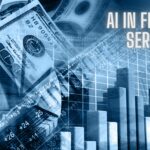 Demand unpredictability concerning demand forecasting is one of the main problems facing business executives today. Customer buying habits are becoming more complicated and challenging to identify or anticipate, even as data availability grows. Many experts believe using AI in demand forecasting is the best way to overcome this problem.
Demand unpredictability concerning demand forecasting is one of the main problems facing business executives today. Customer buying habits are becoming more complicated and challenging to identify or anticipate, even as data availability grows. Many experts believe using AI in demand forecasting is the best way to overcome this problem.
Demand forecasting assists companies in lowering the cost of the supply chain. It aids in significantly enhancing financial planning, production scheduling, profitability, and risk analysis decisions. Machine learning algorithms are utilized by businesses to predict changes in customer demand as precisely as feasible. These algorithms can automatically recognize patterns, locate complex linkages among big datasets, and detect signals of demand cyclicity.
What is demand forecasting?
Demand forecasting assesses a company’s operations that precisely forecast future demand for a good or service. Organizations utilize demand forecasting techniques to prevent inefficiencies brought on by the misalignment of supply and demand throughout the business processes.
What are the types of demand forecasting?
Demand forecasting is a method for predicting what will happen in ambiguous situations. Understanding how helpful this could be for day-to-day operations for businesses dealing with more complex supply networks is simple.
There are six different types of demand forecasting that corporations and businesses frequently employ.
- Short-term: This is employed when a short-term forecast, usually less than a year, is required to estimate sales, product demand, or any other inventory-based forecast.
- Long-term: These forms of forecasts can also consider factors like investment capital, supply chains, and logistical challenges over a longer time horizon (two to four years in the future). They are used to produce the same types of projections as the short-term framework.
- Active: This category projects future sales, marketing, growth, and expansion plans. New businesses frequently use these forecasts to attract investment capital or estimate scaling times.
- Passive: A business with a sizable volume of historical data can use this type of passive information to create demand estimates.
- Internal: This type aids in developing internal predictions to procure a more thorough understanding of the business’s finances, supply chain concerns, product demand, and general operations.
- External: This type helps obtain a precise outward projection of the company’s state overall, taking rivals, goals, and growth into account.
To help with a particular prediction, you can automatically account for any factors you’ll be working with before selecting a style of demand forecasting. These variables include seasonal fluctuations, sales, endless variations in product demand, and marketing and sales initiatives like product launches or sales. Also, it would help if you considered variables beyond your control, such as rival movements or problems in the supply chain.
Benefits of demand forecasting

Demand forecasting assists businesses in streamlining their sales, marketing, and supply chain processes and helps them avoid overstocking or out-of-stock situations:
Improving accuracy by the time
Every time it accesses new data science, it uses machine learning to provide improved forecast accuracy and predictions. It then gradually becomes more knowledgeable and precise.
Increased customer satisfaction
Customer satisfaction will decline when products are “out of stock,” whereas it will increase when things are constantly accessible. This enhances brand reputation and consumer loyalty.
Improved markdown/discount optimization
When merchandise goes unsold for a longer time frame than anticipated, retail businesses frequently experience a condition called cash-in-stock. Higher estimated inventory costs and the possibility of products becoming outdated and losing value are often the results. Products are offered for sale in this scenario at lower selling prices. However, by using demand forecasting, this possibility is avoidable.
Improved manpower planning
Demand forecasting can help the HR division make appropriate decisions about the mix of full-time and part-time employees, optimizing Expenses and effectiveness.
Overall efficiency
Companies can manage unexpected demand changes by reducing/increasing goods and staffing using accurate ai-powered demand forecasts rather than firefighting.
AI in Demand Forecasting
Due to the growing amount of data produced by businesses and other external sources, traditional forecasting models and exponential smoothing approaches that take past data into account are becoming obsolete. Businesses may enhance prediction accuracy and optimize their restocking strategies by integrating machine learning into their supply chain management.
Demand forecasting that advances in machine learning allow for more precise projections based on recent data. This is based on both internal and external data sources, which also include social media, internet reviews, weather, and demographic information. Supply chain networks can perform better and respond to external changes. Especially when they are handled more manually by data analysts utilizing external data and contemporary machine learning algorithms.
Machine learning forecasting methods can locate groups of previous products with comparable traits and lifetime curves. And then utilize those datasets as a stand-in for the absence of historical data for new items.
AI vs Traditional Methods For Demand Forecasting
Traditional approaches make forecasts using single, straightforward criteria. These approaches should change to account for changes in demand brought on by other factors. Since they can only take into account one component that affects demand, which is often historical sales data.
On the other hand, AI forecasting defies this norm by using computers that learn rules and recognize patterns in demand from the data to create forecasts. As a result, other aspects outside sales can be taken into account and educated about, leading to more accurate forecast of the complexity of the real world.
Because of the improved accuracy, reserve stock levels are optimizable, lowering the danger of overstocking while preserving product availability. As buffer stock levels decrease, working capital and product storage space also reduce. AI-driven forecasting can help you have less inventory on hand, save your logistical expenses, and retain customer happiness.
The supply chain can also be impacted by AI techniques. According to McKinsey, AI forecasting can cut supply chain network errors by up to 50%. This can improve transport planning, optimize labor roster, and increase supplier negotiating skills.
How AI will change demand forecasting in the supply chain
Thanks to AI demand forecasting, companies eager to engage in machine learning and decision intelligence solutions now have the option. In the past, businesses have predicted product demand using forecasting solutions. Still, these processes require a lot of manual labor and provide potential for error.
Businesses can analyze data much faster by using AI demand forecasting than they would by depending on humans and conventional forecasting frameworks. Also, it can automatically produce detailed projections that assist the business in making decisions and finding issues that a human could overlook internally or within a supply chain. Platforms for decision intelligence, such as Peak, can go one step further by using an end-to-outcome strategy for making decisions.
How is machine learning used in demand forecasting?
Machine learning is a crucial element of AI’s overall structure and is very helpful for delving into the specifics of a company’s datasets. However, the issue is that there is much data loss. These underused historical datasets may be combined with real-time data by machine learning to give businesses an accurate picture of everything, from product demand to supply chain difficulties.
Here is where machine learning-based demand forecasting can be helpful. Forecasting using the store’s historical datasets:
- What sales their clients genuinely desire
- How much of a discount should they offer
- Which advertising materials, such as Facebook ads and mailbox fliers, will be most effective?
- Possibility of workforce or supply chain shortages before the sale
Three real-world examples of AI demand forecasting
We are aware that for specific firms, phrases like “machine learning,” or “decision intelligence” can seem a little intimidating. Undoubtedly, AI will do all the laborious tasks. The forecasts will benefit you and your firm after you utilize AI for demand forecasting. Business decision-makers will only need to understand the techniques it uses and how machine learning functions.
To help clarify the AI demand forecasting method, below are three real-world examples.
Scenario one: when a company is experiencing a rapid growth
The option of when to increase production is one of the most important ones a young, expanding business must make. Even if monthly income seems encouraging, developing a business requires additional funding and hiring more employees, which is a big decision if the data doesn’t support it. AI demand forecasting can produce a more precise picture of its current growth and project what the coming year will look like. This is by using the company’s previous statistics,
For instance, AI can examine the company’s sales data and determine that they average 15,000 product sales per month but are rising 10% monthly. It can immediately determine what this growth will mean for the business over the following 12 months and anticipate growth figures. Such as how much inventory it should have on hand to meet demand and when it would need to add more employees to operational or supply chain positions.
AI will also use this demand estimate to help the business if it decides to expand operations by making other recommendations. That which includes adding extra capacity for stock storage or conducting sales on well-liked products.
Scenario two: when there are too many supply chain factors to consider
Consider yourself in the position of a business that supplies fresh pizzas to significant grocery chains. There are so much to consider. Flour, cheese, tomatoes, and even packaging all experience price variations. Additionally, if the business doesn’t monitor and respond to these price changes, it could see a reduction in its profit margins.
AI demand forecasting can examine past data to look for patterns in price swings from earlier years. AI and machine learning algorithms can assist the pizza producer in anticipating price changes by learning from previous price fluctuations. Hence, the AI demand forecast needs to consider even minor swings so that the business can set steady rates for its clients without raising them every time there is a change.
It is also necessary to consider how many fresh materials the company must keep on hand to meet demand. With the help of AI demand forecasting, the pizza company can adapt its product lineup to changes in client demand among the outlets it serves. The business can fulfill the supermarket’s order requirements without running the danger of wasting food by hoarding too many fresh items. It may then forecast distribution, replenishment, and variation planning.
Scenario three: when there is no historical data to use
Demand forecasting with AI is not only for businesses with enormous historical data sets. Take the COVID-19 pandemic scenario, when supply systems for firms came to a grinding standstill.
Marshalls, a manufacturing company switched from having excess stock to having limited shares available. The company manually forecasted inventory levels and managed order fulfillment, creating a volatile environment. Because it required a lot of manual labor, the company incorporated AI into its system to assist with inventory management optimization while promoting growth in a global lockdown.
FAQs
How does AI improve market predictions and forecasts?
By utilizing vast volumes of data, sophisticated algorithms, and machine learning techniques, artificial intelligence has the potential to enhance market forecasts and predictions. AI can significantly improve market predictions and forecasts. This is by offering a more thorough and current perspective of the market and simplifying many of the time-consuming and monotonous procedures involved in market analysis. Nonetheless, it’s critical to remember that AI is not a panacea and that qualified market analysts should always verify and examine its projections and forecasts.
How do you do demand planning?
Consider using one of the many AI-based demand planning software for the most straightforward possible demand planning implementation in your system. Using the software, demand planning processes consider past sales, the impact of the days of the week and weeks of the month, promotions, seasonality, weather, and other factors. The demand accuracy is more significant than conventional techniques once the historical sales stack with these variables.
How artificial intelligence will change the demand forecasting in the supply chain?
When used in supply chains, AI can provide the strong optimization capabilities needed for more precise capacity planning, and better demand forecasting. In addition, it provides increased efficiency, cheaper supply chain costs, and higher output—all while promoting safer working conditions.





